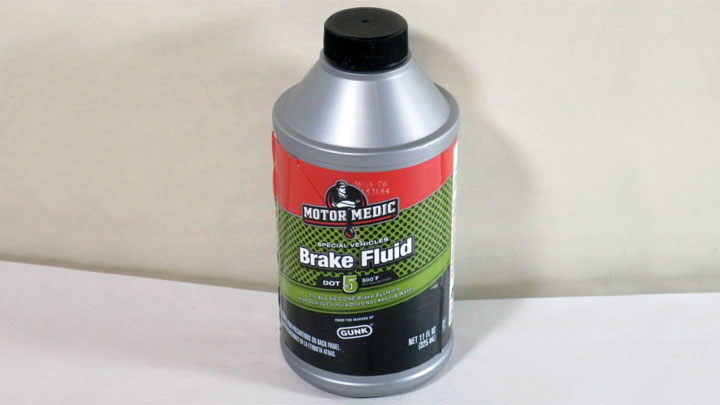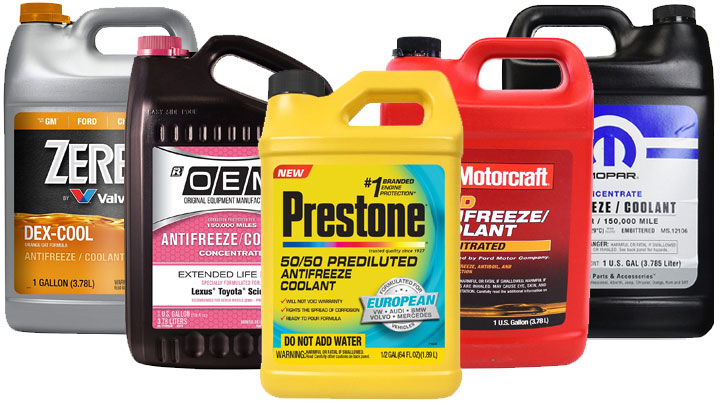Last Updated on March 24, 2021
Whether you’re bleeding your brakes or doing a complete overhaul when you need to choose a brake fluid, it’s vital you pick the right one. While you might think the most expensive option is always the way to go, the truth of the matter is more complicated than that.
Just keep reading our guide, and we’ll tell you everything you need to know about DOT 5 brake fluid and your vehicle. From DOT 5 brake fluid compatibility to its chemical makeup, we have you covered.
DOT 5 Brake Fluid Characteristics
Chemical Makeup
Unlike other brake fluids, which are glycol-based, DOT 5 is silicone-based. The most prominent impact of this is that the silicone-based brake fluid doesn’t absorb any moisture. While this might sound like an inherent advantage of DOT 5, the truth isn’t that simple.
That’s because while DOT 3 and DOT 4 brake fluids absorb moisture, this prevents small amounts of water from building up and rusting brake components. As long as you don’t introduce large quantities of water into the system, everything runs fine.
With DOT 5, small amounts of moisture can ruin brake components and lead to soft brakes. However, if you’re servicing your brakes regularly, this isn’t as big of a problem. DOT 5 has minimal applications and is generally only used when you can’t prevent moisture from getting into the brake system.
Even then, you’ll need to service your brakes to get the moisture buildup out of the system before it causes any damage.
Color

Unlike DOT 3 and DOT 4 brake fluid, which is a yellowish-brown in color, DOT 5 brake fluid is purple.
This makes it easy to check what kind of brake fluid is in your vehicle, which helps determine DOT 5 brake fluid compatibility. This is especially important because You can only mix DOT 5 brake fluid with specific brake fluids.
Boiling Point
DOT 5 brake fluid indeed has a higher boiling point than DOT 3 or DOT 4 brake fluid. At 500 degrees, this is about 50 degrees higher than DOT 4 and 100 degrees higher than DOT 3. However, unless you’re driving a performance vehicle, like in Formula 1 racing, you don’t need the higher boiling point.
It’s the equivalent of buying a supercomputer so you can run Solitaire. Having the extra power doesn’t do anything for you if you’re never going to use it.
Cost
DOT 5 is significantly more expensive than DOT 3 or even DOT 4. It’s typically three times the cost of DOT 3 and twice the cost of DOT 2. This leads to the erroneous belief that it must be superior.
However, the real upgrade for most brake systems is DOT 4 or DOT 5.1. While DOT 5 does offer some performance benefits compared to traditional brake fluids, DOT 5 brake fluid’s drawbacks outweigh the benefits for most applications.
FAQs

Can You Mix DOT 5 and DOT 5.1?
No, despite the similar names, DOT 5 and DOT 5.1 are entirely different brake fluids. Breaking down DOT 5 vs. DOT 5.1 is relatively simple. DOT 5.1 is glycol-based, while DOT 5 is silicone-based. This makes them completely incompatible when mixed.
Can You Mix DOT 5 and DOT 4?
No, DOT 4 is glycol-based, making it fundamentally incompatible with DOT 5 brake fluid. If your fluids do get mixed, you’ll need to flush the entire system multiple times to remedy the situation.
Can You Mix DOT 5 and DOT 3?
No, you can only mix DOT 5 brake fluid with more DOT 5 brake fluid. That’s because DOT 5 is the only brake fluid that is silicone-based; all the rest are glycol-based. Using incorrect brake fluid in your vehicle can cause poor brake performance or even your brakes locking up. Don’t do it.
Should You Switch to DOT 5 Brake Fluid?
Except in extremely rare circumstances, you should not switch to DOT 5 brake fluid. Furthermore, once you switch to DOT 5, you can never go back.
Even if you flush your brakes multiple times, you’ll never get all of the DOT 5 out of the system. It doesn’t matter if you ride a Harley Davidson or drive a Buick; once you switch, you’re stuck unless you replace all of your brake components.
Furthermore, you absolutely cannot switch to DOT 5 brake fluid if your vehicle has ABS brakes. Most newer vehicles have them, meaning that they don’t have DOT 5 brake fluid compatibility.
This is because DOT 5 brake fluid becomes frothy when pressed on and off repeatedly, which is precisely how ABS brakes work. Instead of stopping quickly, your brakes will become spongy, preventing you from stopping at all.
In addition to the added costs, DOT 5 brake fluid needs extra maintenance, or else you’ll end up with soft brakes and rusted components. If you’re thinking about making the switch, don’t. But if your vehicle already uses DOT 5, don’t switch back either.





My newly bought 2003 Softail calls for DOT 5 as per the manual. But checking the fluid it is the color of DOT 3/4. Not purple. Not even remotely sure what to do if I have an issue. The brakes are a little grabby now, front only, Fluid is a little cloudy so I was going to “suck out” the master cylinder to add fresh. Any ideas??
DOT5 and DOT 3/4 are not compatible. Check the manual to make sure you’re using the correct fluid.
If you think you’re using the wrong fluid, you can suck most of it out of the master cylinder, but then you will have to flush it out of the brake lines by bleeding the brakes as well.
What about DOT 6?
I don’t think there is a DOT 6 yet. I’ve never seen one.